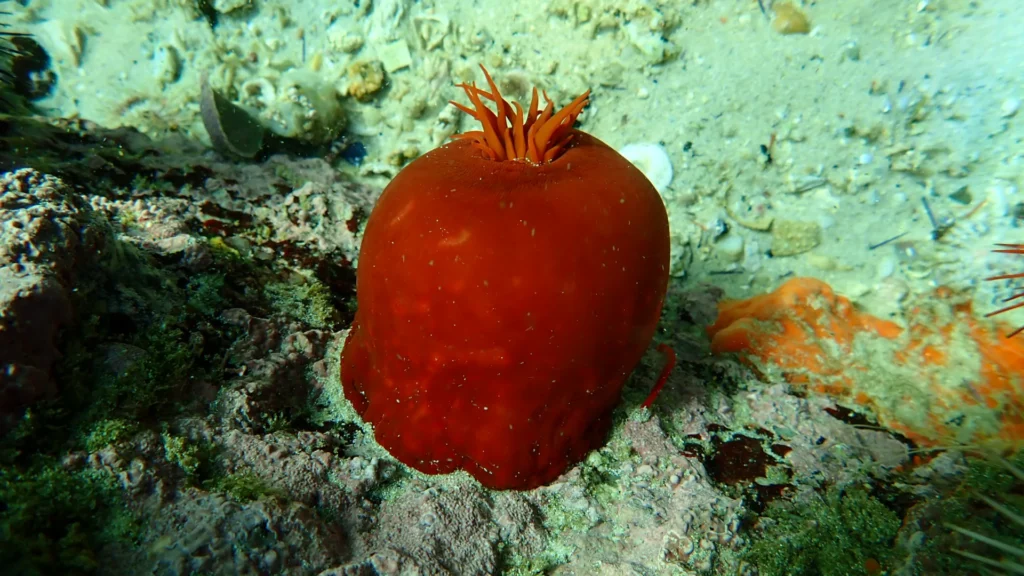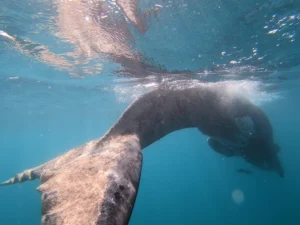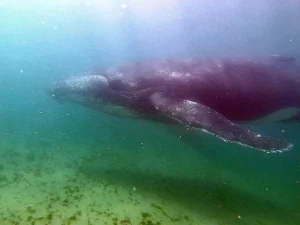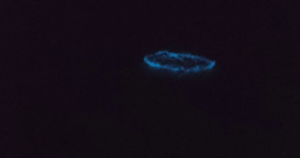Whenever we take customers kelp forest snorkeling, their reaction on seeing sea anemones, starfish and urchins for the first time reminds us of how beautiful these creatures, which we tend to take for granted, really are. There are numerous species of these fascinating marine animals in the kelp forests and they seem to come in all the colours of the rainbow. Novice snorkelers and divers sometimes mistake them for plants, but unlike terrestrial flowering anemones these creatures are definitely animals and predatory ones at that!
Sea anemones are cnidarians (the c is silent) and are related to corals, jellyfish and hydra. Cnidarians have stinging cells called nematocysts or cnidocytes. These stinging cells are located on the ring of tentacles which surround a central mouth. The tentacles sit on top of a column like trunk and below the trunk is the base where the anemone can attach to a hard surface or soft sediment in the case of the sand dwelling anemones. The tentacles can be retracted into the body cavity or expanded out in order to catch passing prey. If you have ever found an anemone in a rock pool and touched the tentacles, you may have felt the tentacles sticking or sucking onto your finger tip. It might not have felt like it, but this was actually the anemone’s stinging cells firing but their barbs were unable to penetrate the dead layer of your skin. Be careful though because some anemones can penetrate your skin and sting you, so it’s best not to touch them and be extra careful not to brush up against them when freediving or snorkeling. They prey on molluscs, whelks, fish, crabs, worms and even jellyfish as can be seen in the photo below. They eject sperm and eggs from their mouths which then fertilise and develop into free-swimming larvae which then settle on rocks or sand and develop into juvenile polyps. They can also breed asexually by breaking into smaller pieces which regenerate into polyps.
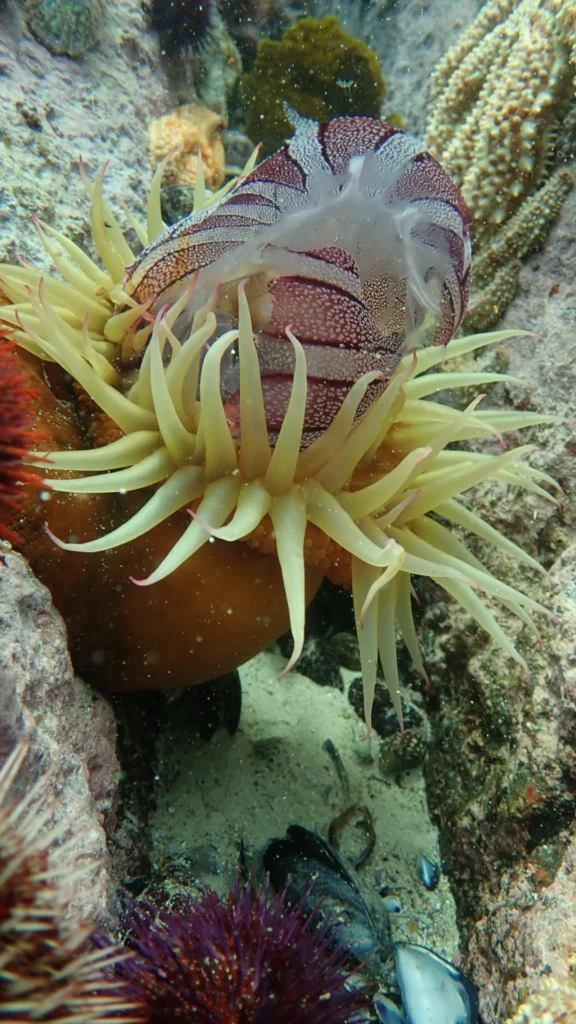
The False plum anemone is one of the larger species and can grow up to 20cm in diameter. You can see fields of these beautiful creatures mixed in with urchins at Windmill Beach in the left channel. Its column or body can be orange, yellow or red and its tentacles are usually a mauve colour. They do not retract their tentacles very easily and tend to stay in submerged areas. Their sting can penetrate human skin so do be careful not to bump into them and do not deliberately touch them
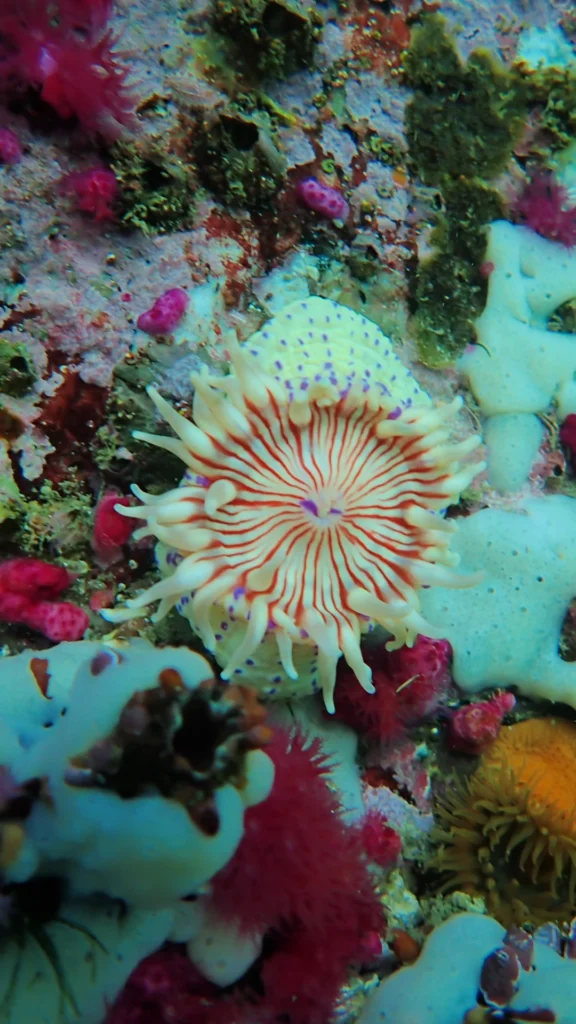
The Violet-spotted anemone is smaller than the False plum anemone and can grow to 12cm in diameter. It has a yellow body with bright violet spots. Scarlet lines run from its tentacles towards its mouth which has two violet spots on either side. If you take the time to count them, there should be 48 short tentacles. You’ll find these pretty creatures from the low tide mark all the way down to about 18m.
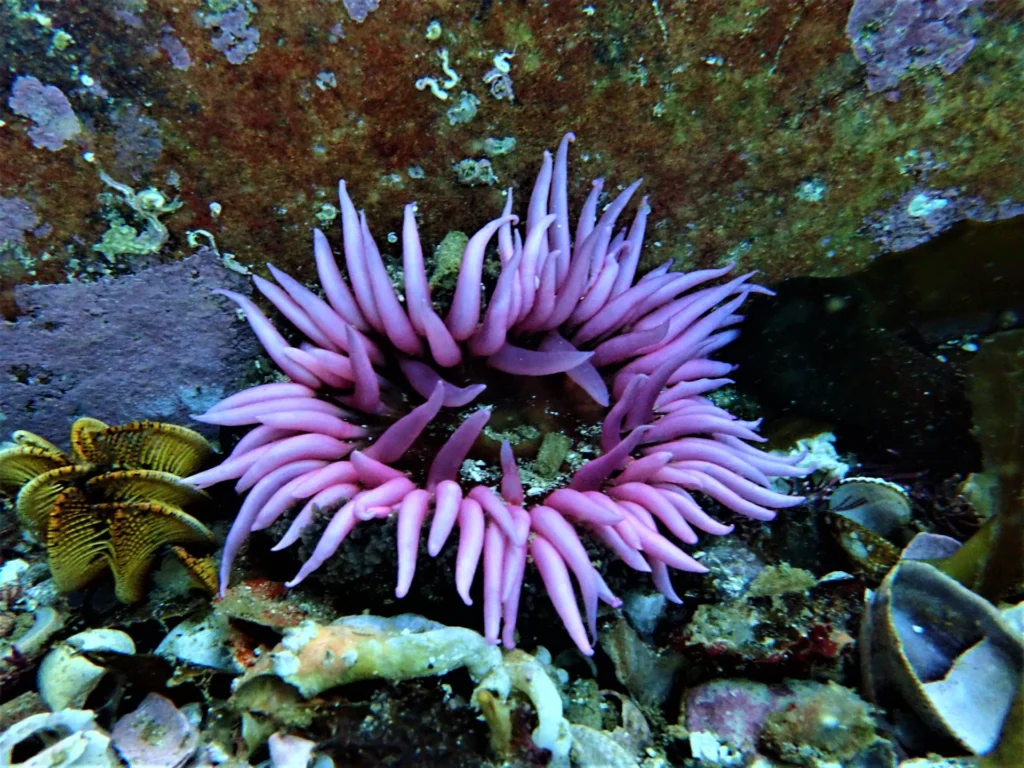
As the name Sandy anemone implies, this creature can be found in sandy gullies or around the bases of boulders. It grows up to 10cm in diameter and adults can have over 300 short tentacles. They are often covered with sand and debris and come in a range of colours including pink, brown, green and blue. They prefer intertidal and shallow areas no deeper than 4m.
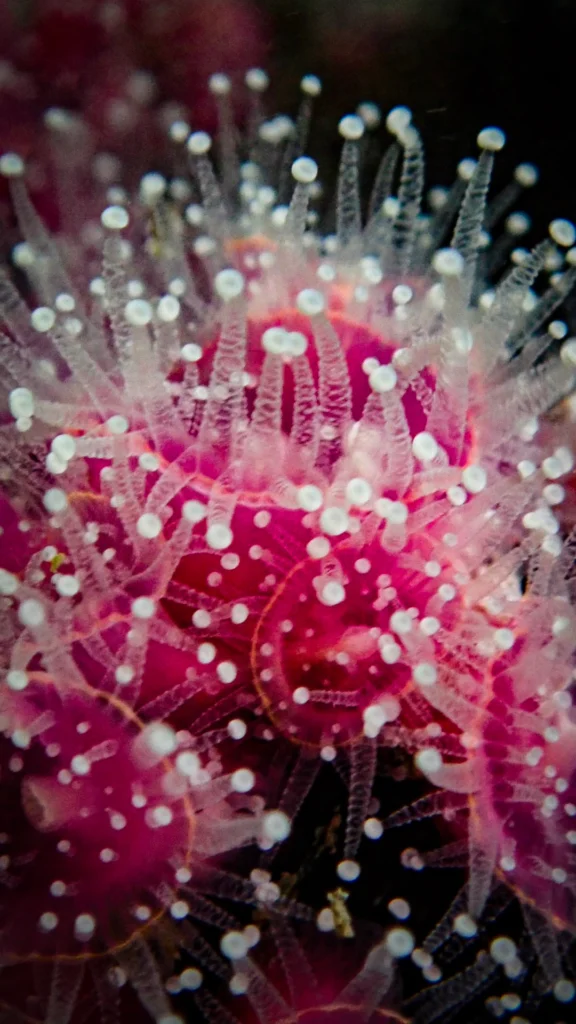
These tiny pink anemones grow only 1cm in diameter and have white knobs at the ends of their tentacles. The Strawberry anemone is colonial and occurs in clusters on rocks and wrecks. It feeds on small planktonic creatures and can be found up to 35m deep.
